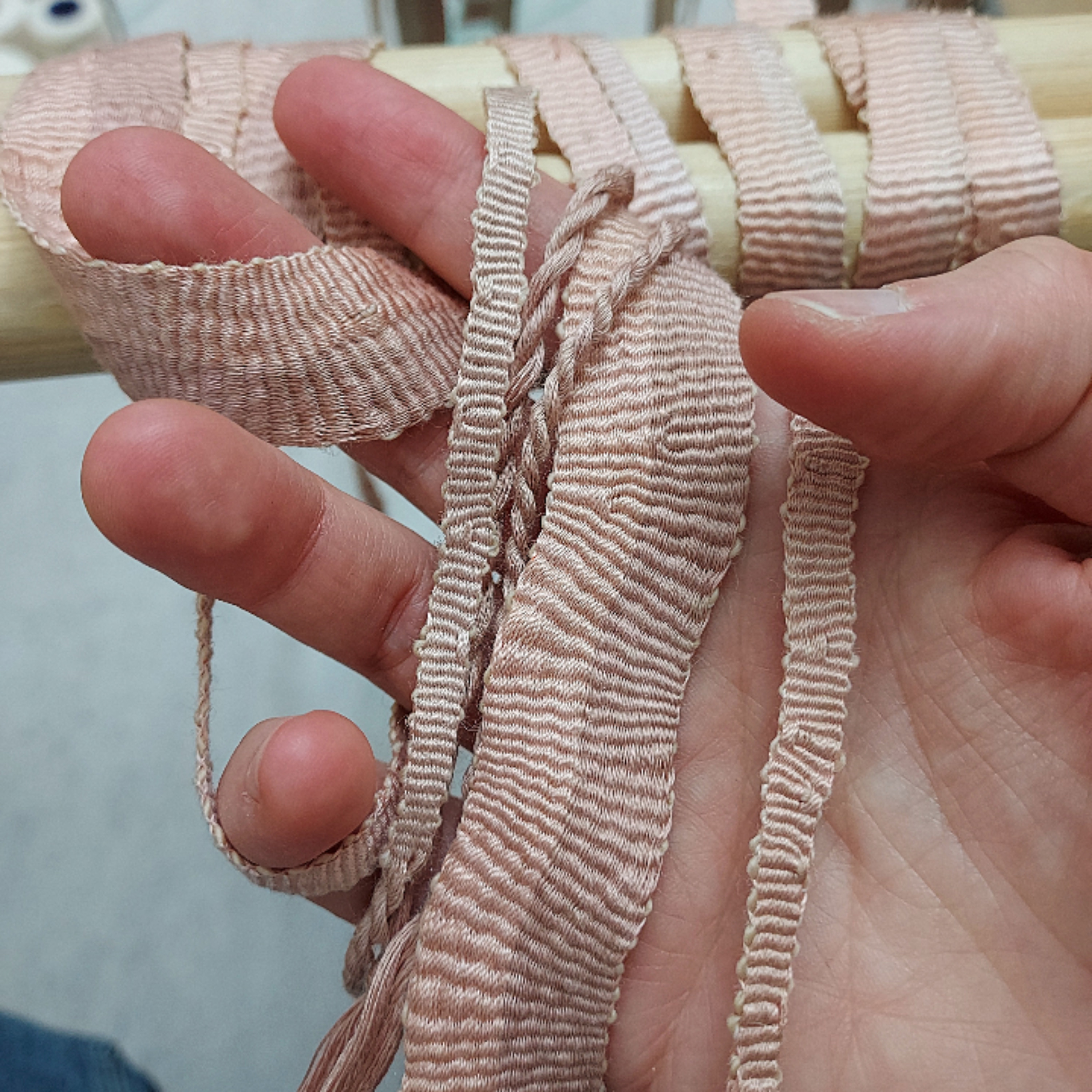Negotiation of Forces in Performative Weaving
DOI:
https://doi.org/10.7577/formakademisk.5411Emneord (Nøkkelord):
weaving, embodiment, craftSammendrag
I am a textile artist that builds performative weaving constructions emphasizing the tensions in the reciprocal dialogue that occurs between body, tools and materials. This strategy has emerged from an intention to approach an embodied and immersive relationship with a weaving practice. How does a body adapt to a craft, and how does the craft change in response? All making, especially weaving, can be considered a modality of growth, and the body and any work produced in a craft relationship become a symbiotic, adaptive being. The textile is a life-sustaining extension and evolution of the human body. Our mutual dependence is the ground out of which I develop my projects. My research has settled into a generative weaving installation, designed to encourage the blurring of boundaries between body, loom and dyebath, fibers and pigments (the body becomes the tool, the material is the body, the material is the tool). The installation itself is woven as it is activated, made up of an unbroken silk band. The weaver is integrated through a modified backstrap loom, ancient technology that relies on muscular resistance for tension. To this end, the woven band loops around the waist, and around the weaving heddles, connecting the feet to them. The dyepot anchors the system to the room and to the body. If an element is out of balance, it will collapse. One can continually graft new threads onto this band, so in theory it could go on growing indefinitely. This ecosystem is perfectly calibrated to fit the weaver's body and circumstance, an enhanced, collaborative being, like a stone-age cyborg.
Referanser
Clark, A. & Chalmers, D. J. (1998). The extended mind. Analysis 58(1), 7–19. https://doi.org/10.1093/analys/58.1.7
Ingold, T. (2000). The Perception of the Environment. Essays on Livelihood, Dwelling and Skill. On Weaving a Basket (pp.339–48). Routledge.
Malafouris, L. (2020). Thinking as “Thinging”: Psychology With Things. Current Directions in Psychological Science, 29(1), 3–8. 10.1177/0963721419873349.
Neimanis, A. (2017). Bodies of Water: Posthuman Feminist Phenomenology. 1-26. Bloomsbury Academic. https://doi.org/10.5040/9781474275415

Nedlastinger
Publisert
Hvordan referere
Utgave
Seksjon
Lisens
Opphavsrett 2023 Rosanna Vibe

Dette verket er lisensiert under Creative Commons Attribution-NoDerivatives 4.0 International License.
- Forfatteren(e) beholder sin opphavs- og kopieringsrett til eget manuskript, men gir tidsskriftet varig rett til 1) å fremføre manuskriptet for offentligheten i den opprinnelig publiserte digitale form, og 2) å registreres og siteres som første publisering av manuskriptet.
- Forfatteren må selv forvalte sine økonomiske kopieringsrettigheter overfor eventuell tredjepart.
- Tidsskriftet gir ingen økonomisk eller annen kompensasjon for innsendte bidrag, medmindre det er gjort særskilt avtale om dette med forfatteren(e).
- Tidsskriftet plikter å arkivere manuskriptet (inklusive metadata) i den opprinnelig publiserte digitale form, i minst ett dertil egnet åpent tilgjengelig langtidsarkiv for digitalt materiell, som for eksempel i de norske universitetenes institusjonsarkiv innen rammen av NORA-samarbeidet.
Verket vil bli publisert OpenAccess med en Creative Commons 4.0-lisens som tillater alle å lese, dele og tilpasse innholdet, også kommersielt, under lisensvilkårene:
Dette verket må tilskrives/ krediteres på riktig måte, en lenke må gis til CC-BY 4.0-lisensen, og endringer som er gjort må angis på en rimelig måte, men ikke på noen måte som antyder at lisensgiveren støtter deg eller din bruk.



